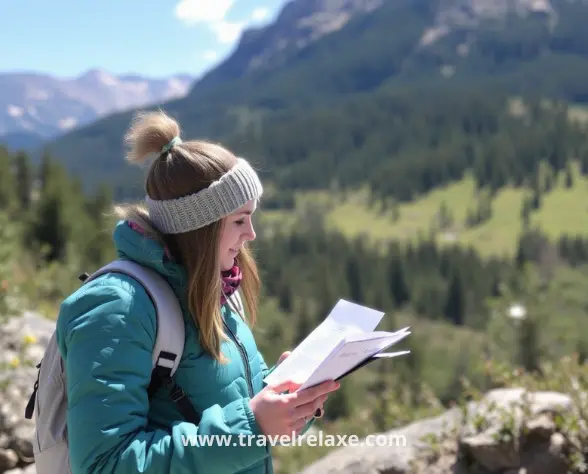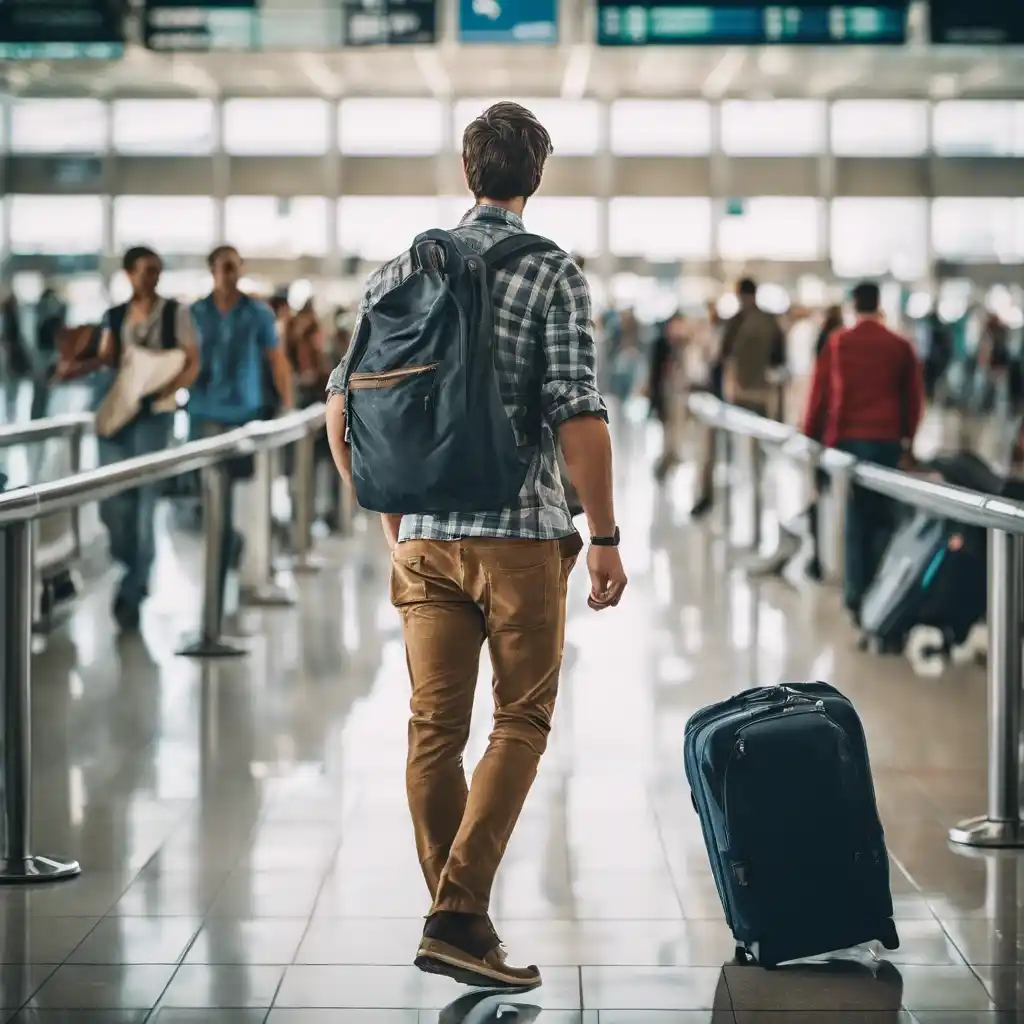Getting Planning a Trip

Getting Planning a Trip: A Step-by-Step Guide
Planning your trip can feel overwhelming, right? Where do you even begin? What’s the first step? The second? The third? Don’t worry! This page has all the best resources you need to plan your trip from start to finish. These guides cover all the essentials, showing you exactly what to do at each stage. You’ll learn how to narrow down your travel options, find reliable information online (apart from here), and avoid the rookie mistakes I made when I first started traveling!
Choosing Your Destination
So, you’re ready to plan your next adventure! The first step is to decide where you want to go. It’s like choosing a delicious ice cream flavor—there are so many options! Think about what you enjoy doing. Do you love to relax on sandy beaches and soak up the sun? Or do you prefer exploring the great outdoors, hiking through forests, and climbing mountains? Maybe you’re more of a city person, excited by the hustle and bustle of busy streets and vibrant nightlife. Or perhaps you’re looking for a peaceful retreat in the countryside, surrounded by nature and tranquility. Whatever your interests, there’s a perfect destination out there waiting for you.
Researching Potential Destinations
Now that you have a good idea of what kind of trip you’re looking for, it’s time to do some research! Start exploring different destinations that match your interests. You can read travel blogs, watch videos, and even check out Instagram for inspiration. There are tons of resources online to help you find the perfect place. Make a list of your top picks and start dreaming about your adventure!
Factors to Consider: Budget, Interests, and Timing
Before you start packing your bags, it’s important to consider your budget. Some places are more affordable than others. For example, living costs can vary greatly from country to country. Flights can also be expensive, especially during peak travel seasons. And of course, accommodations like hotels or hostels can add up quickly. So, it’s a good idea to set a budget before you start looking at destinations.
Another factor to consider is the timing of your trip. Some places have peak seasons when prices are higher and there are more crowds. For example, popular beach destinations might be more expensive and crowded during the summer months. However, visiting during the off-season can often be more affordable and less stressful.
Table of Contents
Setting a Budget: Getting Planning a Trip
Now that you’ve chosen your dream destination, it’s time to set a budget. Understanding the costs involved will help you plan your trip effectively and avoid any financial surprises. Consider factors such as transportation, accommodation, food, activities, and souvenirs. By setting a realistic budget, you can ensure that you have enough money to enjoy your trip without worrying about overspending.
Understanding the Costs Involved
When planning your budget, make sure to include all potential expenses. This includes the big things like flights, accommodation, and transportation, but don’t forget about the smaller details. Travel insurance can be a lifesaver, protecting you from unexpected events. If you need a visa to enter the country, be sure to factor in the cost. And let’s not forget about souvenirs—it’s always fun to bring back a little piece of your adventure!
By having a clear idea of the total cost of your trip, you can plan accordingly and save money where necessary. Perhaps you can find more affordable accommodations or cook some of your own meals to save on food costs. Or maybe you can find free or low-cost activities to enjoy. Whatever you do, having a budget will help you make informed decisions and avoid any financial surprises during your trip.
Tips for Saving Money While Traveling
Traveling doesn’t have to be expensive. In fact, there are plenty of ways to save money and still have an amazing adventure. One of the best ways to save is to book your flights in advance. Prices tend to be lower when you book early, so be sure to plan ahead.
Another great way to save money is to choose budget-friendly accommodations. Instead of staying in luxury hotels, consider staying in hostels, guesthouses, or even Airbnb rentals. These options can be much more affordable without sacrificing comfort.
When it comes to food, eating like a local is a great way to save money. Instead of dining at expensive tourist restaurants, try local eateries where you can enjoy authentic food at a fraction of the cost.
Finally, consider traveling during the off-peak season. Prices are generally lower and crowds are smaller, making it a more enjoyable and affordable experience.
By following these tips, you can enjoy a fantastic trip without breaking the bank.

Deciding on Travel Dates
The time of year you choose to travel can have a big impact on the cost and experience of your trip. For example, traveling during peak season can be more expensive and crowded, while traveling during the off-season can be more affordable and less stressful.
If you’re looking for warm weather and sunny skies, you might want to travel during the summer months. However, keep in mind that this is also the most popular time to travel, so prices will be higher and attractions may be crowded.
On the other hand, traveling during the shoulder seasons (spring and fall) can be a great option. The weather is often pleasant, prices are lower, and there are fewer crowds.
Ultimately, the best time to travel depends on your individual preferences and priorities. Consider your budget, the weather, and your desired activities when choosing your travel dates.
Picking the Best Time to Travel: Getting Planning a Trip
Before you book your trip, it’s a good idea to research the best time to visit your chosen destination. Consider the weather, local events, and peak tourist seasons. Traveling during the shoulder seasons (just before or after peak season) can be a great option. You’ll often enjoy pleasant weather, fewer crowds, and lower prices compared to the peak season.
For example, if you’re planning a beach vacation, traveling during the shoulder seasons can be a great way to avoid the scorching heat and large crowds of the peak summer months. You’ll still enjoy warm weather, but it won’t be as hot or crowded.
Additionally, traveling during the shoulder seasons can allow you to experience local events and festivals without the crowds. Many destinations have unique cultural events that take place during the off-peak season.
By researching the best time to visit your destination, you can make the most of your trip and enjoy a more enjoyable and affordable experience.
Considering Peak and Off-Peak Seasons
During peak season, you can expect higher prices for everything from flights and accommodations to food and activities. Additionally, popular attractions may be crowded, making it difficult to enjoy your experience.
On the other hand, traveling during the off-peak season can offer a more relaxed and enjoyable experience. Prices are generally lower, and attractions are less crowded, allowing you to fully appreciate your destination.
However, it’s important to note that some destinations may have limited accessibility during the off-peak season due to weather conditions. For example, ski resorts may be closed during the summer months, and beach destinations may experience colder temperatures and fewer sunny days.
By considering the pros and cons of both peak and off-peak seasons, you can choose the best time to travel for your specific needs and preferences.
Booking Flights and Accommodation
Once you’ve settled on your dates, it’s time to book your flights and accommodation. Getting the best deals requires a bit of strategy and timing. Getting Planning a Trip can be easy with travel tips.
How to Find the Best Deals on Flights

To find the best deals on flights, use websites that compare different airlines and prices. You can also set up alerts to be notified when prices change. If you can be flexible about when you travel, you might be able to find even cheaper flights. Don’t forget to check nearby airports—sometimes, flying in or out of a different airport can save you money
Choosing the Right Accommodation: Hotels, Hostels, or Vacation Rentals

When planning your trip, finding the perfect place to stay is just as important as choosing your destination. You have a variety of options to choose from, depending on your budget and preferences.
Luxury hotels offer top-notch amenities and services, but they can also be the most expensive option. If you’re looking for a more affordable option, hostels are a great choice. They provide basic accommodations at a budget-friendly price, and they’re also a great way to meet other travelers.
For a more homey feel, consider a vacation rental. Websites like Airbnb offer a wide range of options, from cozy apartments to spacious houses. Vacation rentals can be a great choice for families or groups of friends.
No matter what type of accommodation you choose, it’s important to consider your priorities. Are you looking for a central location, comfortable amenities, or a peaceful atmosphere? By understanding your needs, you can find the perfect place to stay that will enhance your travel experience.
Planning Your Itinerary: Getting Planning a Trip
Now that you’ve taken care of the practical details like flights and accommodation, it’s time to plan your itinerary. A well-planned itinerary will help you make the most of your trip by ensuring you see all the must-see attractions while also leaving plenty of time for relaxation and exploration.
Consider your interests and the pace you prefer when planning your itinerary. Do you want to pack your days with activities, or do you prefer a more leisurely pace? Be sure to include some flexibility in your itinerary to allow for spontaneous discoveries and unexpected adventures.
Creating a Balanced Schedule
When planning your itinerary, don’t try to cram too many activities into each day. It’s important to leave some room for spontaneity and relaxation. You never know what amazing discoveries you might make or what unexpected experiences you might encounter.
Additionally, be mindful of the travel time between destinations. Factor in transportation times when planning your itinerary to avoid feeling exhausted. A well-planned itinerary will allow you to enjoy your trip without feeling overwhelmed or rushed.
Must-See Attractions vs. Hidden Gems
It’s important to see the popular places, but don’t forget about the hidden gems that might not be in every guidebook. Ask the people who live there for recommendations, and be open to exploring places that aren’t as well-known.
Packing Smarter not harder: Getting Planning a Trip
Packing can be stressful, but it doesn’t have to be! With a little planning, you can pack efficiently and stress-free
Packing Essentials for Every Trip
No matter where you’re going, there are a few things you’ll always need: your passport, a phone charger, comfortable shoes, and a reusable water bottle. Make a list to make sure you don’t forget anything important.
Packing Light: Tips for Traveling Smart
Packing light is a valuable skill for any traveler. By following these tips, you can streamline your luggage and enjoy a more comfortable and convenient journey:
- Choose versatile clothing: Opt for pieces that can be mixed and matched to create multiple outfits. Think about the climate of your destination and pack accordingly.
- Roll your clothes: Rolling your clothes instead of folding them can save space in your suitcase.
- Edit your packing list: Be ruthless when packing. Ask yourself if you really need each item. If you’re unsure, leave it out. You can always buy essentials at your destination.
Travel Insurance: A Safety Net for Your Travels
Travel insurance is often overlooked but can be a lifesaver in unforeseen circumstances. Here’s why it’s worth considering:
- Medical emergencies: If you experience a medical emergency while traveling, travel insurance can cover the cost of treatment and transportation.
- Trip cancellations: If your trip is canceled due to unforeseen circumstances, travel insurance can reimburse you for your non-refundable expenses.
- Lost luggage: If your luggage is lost or stolen, travel insurance can help cover the cost of replacing your belongings.
How to Choose the Right Travel Insurance Policy
When selecting a travel insurance policy, consider the following factors:
- Trip length: The longer your trip, the more comprehensive your coverage should be.
- Destination: Some destinations may have higher risks, such as natural disasters or political instability. Make sure your policy covers these risks.
- Activities: If you’re planning on participating in adventurous activities, ensure your policy includes coverage for these activities.
By carefully comparing different policies and choosing one that suits your needs, you can travel with peace of mind knowing that you’re protected in case of unexpected events.
Exploring a New City: Transportation Tips
Traveling to a new city can be exciting, but figuring out how to get around can be a bit overwhelming. With a little planning, you’ll be navigating like a local in no time.
Transportation Options: Getting Planning a Trip
There are many ways to explore a new city. Some popular options include:
- Public transportation: Buses, trains, and subways are often the most affordable way to get around. Learn how to use the local transit system and consider getting a travel pass for convenience.
- Taxis: Taxis can be a convenient option, especially if you’re traveling with a group or carrying a lot of luggage.
- Bike rentals: If you enjoy cycling, renting a bike is a great way to see the city at your own pace.
- Walking: Many cities are best explored on foot. Walking allows you to experience the city up close and discover hidden gems.
- Getting Planning a Trip can be easy with our travel tips
Tips for Using Public Transportation:
- Learn the basics: Familiarize yourself with the local transit system, including routes, schedules, and fares.
- Purchase a travel card or pass: This can save you time and money, especially if you’ll be using public transportation frequently.
- Ask for directions: Don’t be afraid to ask locals for help if you’re unsure how to get somewhere.
Embracing Local Culture: Tips for Respectful Travel
When exploring a new destination, understanding and respecting the local culture is essential for a positive travel experience.
Why Cultural Awareness Matters:
Showing respect for local customs and traditions demonstrates your appreciation for the host culture. It also helps you avoid any unintentional misunderstandings or offenses. By immersing yourself in the local culture, you’ll gain a deeper understanding of the people and their way of life.
Tips for Respectful Travel:
- Do your research: Before you go, take the time to learn about the local customs, traditions, and etiquette. This will help you avoid any cultural faux pas.
- Learn a few basic phrases: Even a few basic phrases in the local language can go a long way in showing respect.
- Dress appropriately: Be mindful of local dress codes and customs. It’s always better to be respectful than to stand out for the wrong reasons.
- Be polite and considerate: Remember to be polite and considerate in all your interactions with locals.
Traveling Safely: Essential Tips
Safety should always be your top priority when traveling. Here are some essential tips to help you stay safe and enjoy your trip:
Stay Alert and Aware:
- Be mindful of your surroundings: Pay attention to your surroundings and be aware of potential risks.
- Avoid risky areas: Research and avoid areas known for crime or unrest.
- Stay informed: Keep up-to-date with local news and travel advisories.
Protect Your Valuables:
- Keep your belongings secure: Use anti-theft backpacks, locks, and other security measures.
- Avoid carrying large amounts of cash: Use credit or debit cards whenever possible.
- Store valuables safely: Keep your passport, wallet, and other important items in a secure place, such as a hotel safe or money belt.
Travel Companions:
- Let someone know your plans: Inform friends or family members of your itinerary and contact information.
- Travel with a companion: If possible, travel with a friend or family member for added safety.
By following these tips, you can minimize your risks and enjoy a safer and more enjoyable travel experience.
Food and Water Safety: Enjoying Local Cuisine Safely
When traveling to a new destination, it’s important to prioritize food and water safety, especially if you’re unfamiliar with local hygiene standards. Here are some tips for enjoying local cuisine without getting sick:
Choose Wisely:
- Eat where the locals eat: Restaurants frequented by locals are often a good indicator of food quality and safety.
- Avoid questionable street food: Be cautious of street food that has been sitting out for an extended period.
- Be wary of raw or undercooked dishes: Raw or undercooked meat, poultry, and seafood can carry harmful bacteria.
Stay Hydrated Safely:
- Stick to bottled or filtered water: Avoid tap water unless you’re certain it’s safe to drink.
- Beware of ice: If you’re unsure of the water source, avoid drinks with ice.
By following these guidelines, you can safely enjoy the local cuisine and minimize your risk of foodborne illness.
Tech Savvy Travel: Using Technology to Your Advantage
In today’s digital age, technology can be an invaluable asset for travelers. With the right apps and tools, you can plan, navigate, and stay connected with ease.
Essential Travel Apps and Tools:
- Booking apps: Use popular apps like Booking.com and Expedia to find and book flights, accommodations, and activities.
- Navigation apps: Download offline maps and GPS navigation apps like Google Maps or Apple Maps to help you get around unfamiliar cities.
- Translation apps: Translate menus, signs, and conversations with ease using apps like Google Translate or iTranslate.
- Currency converter apps: Keep track of exchange rates and convert currencies on the go.
Staying Connected:
- International phone plans: Check with your mobile carrier for international roaming options and data plans.
- Local SIM cards: Consider purchasing a local SIM card for affordable data and calling rates.
- Wi-Fi hotspots: Look for free or paid Wi-Fi hotspots in public places like cafes, hotels, and airports.
By utilizing these technological tools, you can streamline your travel planning, navigate unfamiliar cities with confidence, and stay connected with friends and family while abroad.
Navigating Travel Challenges: A Guide to Staying Calm and Adaptable
Even the most meticulously planned trips can encounter unexpected hurdles. By being prepared and maintaining a positive attitude, you can navigate these challenges with grace and resilience.
Common Travel Hiccups and Solutions:
- Missed flights: If you miss your flight, contact the airline immediately to rebook. Be prepared to pay additional fees or adjust your itinerary.
- Lost luggage: Report lost luggage to the airline and provide detailed information about your belongings. Keep copies of important documents handy.
- Unexpected weather: Be prepared for weather-related disruptions by checking forecasts and packing accordingly. Consider travel insurance to cover potential expenses.
Maintaining a Positive Outlook:
- Stay calm and collected: Avoid panicking or getting overwhelmed. Take a deep breath and assess the situation calmly.
- Have a backup plan: Be prepared for contingencies, such as alternative transportation or accommodations.
- Embrace flexibility: Remember that travel is an adventure, and unexpected twists can often lead to unforgettable experiences.
By staying calm, adaptable, and prepared, you can turn potential travel challenges into opportunities for growth and adventure.
Conclusion
Getting Planning a Trip might seem like a lot of work, but with a little planning and a positive attitude, it can be fun! From choosing the perfect place to visit to packing smart and staying safe, every step is a chance to make unforgettable memories. So start planning, be flexible, and get ready for an amazing adventure!
FAQs About Getting Planning a Trip
What is the best way to start planning a trip?
Start by choosing your destination and setting a budget. Research your options, consider your interests and timing, and make a plan that suits your needs.How far in advance should I book my flights and accommodation?
It’s generally best to book flights and accommodation 3-6 months in advance to get the best deals. However, this can vary depending on the destination and time of year.What are some tips for traveling on a budget?
Look for deals on flights and accommodation, travel during the off-peak season, eat like a local, and use public transportation.How can I make sure I stay safe while traveling?
Stay aware of your surroundings, keep your valuables secure, avoid risky areas, and always let someone know your whereabouts.Should I get travel insurance for every trip?
While not mandatory, travel insurance is highly recommended, especially for international trips. It can provide peace of mind and coverage in case of emergencies.

Top Travel Resources
When we are planning a trip, selecting the right travel companies is essential for a hassle-free and enjoyable journey. Throughout the past 17 years, I’ve visited numerous destinations and tried out hundreds of travel companies. Some of them have been fantastic, making my trips seamless, while others, to be honest, have been quite disappointing. To help you find your way through the wide array of options, I’ve put together a list of top-tier travel companies that have consistently provided excellent service. These are my trusted choices for planning and booking trips, and I suggest you consider them for your upcoming adventure!
